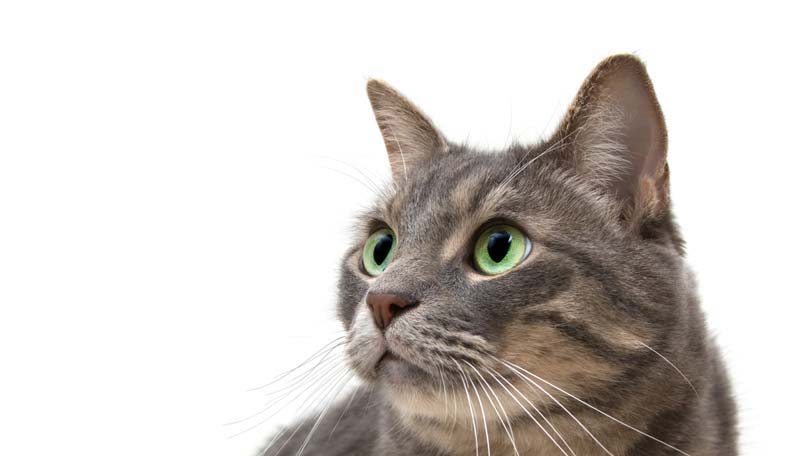
You have just brought a new kitten, or possibly a full grown cat, into your home. Get ready for the little one to rip and roar through your house, chasing who knows what. Get used to having someone follow you around the house, especially when its feeding time. If it’s a kitten, it may trail directly at your feet—even when you go to the bathroom. Cats grow an ever-devoted love to those that feed them and don’t harm them.
If this is your first feline friend, you will probably be wondering, “what the heck do I buy for this cat?” Here are some cat supplies that every cat owner should have in the house.
Cat Food
The basics for any living creature after shelter is food and water. So the first set of supplies you will want to purchase for your cat is a bag of cat food and two bowls—one for water and the other for dry food. You may also want to purchase an additional bowl or dish for wet food, otherwise known as canned cat food.
First a little story. When I took in my first kitten back in 2000, I was a little naïve and scared at first. I didn’t know if it would like me, if it would hurt me, or steal my breath in my sleep as the old wives tales say. He was found in a bush with his brothers and sisters—someone picked them up and took them to the front of a local store to give them away. When I saw the tiny yellow cats my heart immediately melted. I picked up the first cat and it swatted at me, so I put it right back down. No thanks! Then I picked up the next one and it just lay quietly in my arms. This was the one, and I thank God for making that choice. I named him Rome. He started tripping when I walked him to the car, scratching and clawing to get back to his siblings. In the car he hid under the back seat. I was a little worried, but later that same day after I brought him home and fed him, he came right up to me and lay on my lap to go to sleep. I knew everything would be fine.
When I went to the store to buy Rome his first bag of cat food, I went to the supermarket, not the pet store. I went right for a brand that I recognized from commercials. It was cheap, about $8 for a large bag, and Rome liked the taste. But little did I know that the food had potential costs much greater than the cheap $8 I spent at the supermarket.
I took Rome to the vet for a checkup, and the vet asked me what I was feeding him. When I told him the brand, he gasped and scolded me. He told me that if I valued my cat’s health, I would buy him a more nutritious, and thus expensive, food. He explained that foods like the one I bought for $7.99 a bag were high in fillers, preservatives, by-products, and magnesium, a substance which can lead to crystals in the cat’s urine if given in large quantities over time. He said that feeding your cat this cheap dry food over an extended period of time (years) will eventually lead to the deterioration of your cat’s health. That was all I needed to hear. I love my Rome, and I was not about to feed him anything that could harm him in the future. Even if it meant plopping down a whopping $30 a bag for some Hill’s Science Diet. The doctor gave me a sample of this expensive food to bring home and feed my cat—he absolutely loved it.
Most people would assume that the vet “gamed me up” meaning that he was trying to sell me his own stock of Science Diet, but it turned out that he was right. Not long after feeding my cat the Science Diet, his coat became glossy, his eyes were brighter, and his activity level soared. Therefore, I suggest that any good cat owner who values the health of their pet buy a high caliber food—quality over price. Some pet owners swear by natural food products that can only be found in specialized stores that carry hard-to-find cat supplies.
Litter Box and Litter
The same day you buy your first bag of cat food, you should be buying a litter box and litter as well. After all, what goes in most certainly will come out, and you don’t want that last part to happen on your carpet. Most cats are trained by their mother to go to the bathroom in a litter box, or somewhere they can cover their mess. It is kind of cool how cats just know by instinct where they are supposed to go to the bathroom, and that they need to cover it up. If they don’t have a litter box, they will probably find a discrete corner of your house to do their business—maybe your shoe. So basically, make sure they have a litter box!
There are many different types of litter on the market. Some are crystal, some are rocks, some are sand. The type I prefer for my cats is sand because it is easily scoopable, and it doesn’t hurt their feet like rocks and crystals do. I also find that sand litter minimizes odor. Buy litter in bulk—they have 30 to 40 pound buckets. It saves money and time since you will not have to run back and forth to the store every few days. Tip: use empty litter buckets to consolidate and dispose of cat waste.
Litter boxes come with and without covers. If you don’t want your house smelling like ten week old garbage, you will get one with a cover on it to keep most of the smell inside of the box. The Litter Maid is a new but expensive product on the market that automatically cleans your cat’s litter box at a designated time of day. This is ideal for those who are forgetful about cleaning out their cat’s litter regularly.
Cat Toys
The next purchase after the basics of food and shelter have been covered is entertainment. Just as we humans love television and computers for our amusement, cats need something to keep them occupied between meals and sleep as well.
I have tried many different types of cat toys with my cats. From toys that squeeze like a rubber duck, to electronic mouses that move when they are touched. From my experience, the only store bought toys that actually grab a cat’s attention and make them want to play are: toys that dangle from a string and make noise, balls of string (and balls in general), and circular tubes with bells and catnip hanging inside. Carpeted cat “homes” that have several compartments for the cat to climb through are also very popular with cats.
What I’ve found is that everyday household items are the best toys. Throughout my extended family there are six cats, and each one loves the following:
- Cardboard boxes – cats love to jump inside and “hide.” Lord knows why, but they do!
- Wrapping paper – cats go crazy at Christmas when there is wrapping paper strewn across the floor. In fact, any paper that makes a “crinkly” sound—paper or plastic—is interesting to a cat.
- Water bottle twisty ties – the plastic tie that comes off when you open a gallon of water is very amusing to cats. They will paw at and “chase” this item around for hours, or until it gets lost under a dresser.
- Cords – run with an iron around the house and your cats will happily chase the plug. They liken it to a mouse.
Once you have the three basic cat supplies in your home, you can then start thinking about other miscellaneous items as time goes along, such as a cat bed, nail clippers, and flea collars and medication. In the meantime, trial and error is sometimes your best bet when deciding on the right supplies for your beloved kitty.





